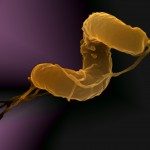The LabEx MI project (Laboratoire d’Excellence Milieu intérieur , www.milieuinterieur.fr) is a clinical study carried out on 1000 people between 20 and 70 years of age, meeting defined health criteria, with the main aim of characterizing the genetic and Environmental factors that control the variance of the immune response in a healthy population. This project brings together a consortium of 28 laboratories of the Institut Pasteur and other associated laboratories.
The UTechS PBI is part of this consortium with the project “MI Fibroblasts” which studies the innate immune response of the fibroblasts resulting from the skin biopsies of 300 donors selected from the 1000 healthy donors of the IM project cohort.The “MI Fibroblasts” develops high content type approaches to phenotypically and functionally characterize the fibroblasts of these healthy donors. Schematically, this project is structured on four axes that relate to the fundamental biology (axis n ° 1 and 2) of applied biology (axis n ° 3), or of technological development (axis n ° 4).
Axe n°1 : definition and characterization of functional membrane markers:
– There is no specific marker for fibroblasts: they share different markers with other cell types of mesenchymal origin. The primary fibroblast cultures of the various donors are kept in culture or frozen at different passages. Over time, the fibroblasts enter into replicative senescence and stop growing. Defining the innate immune response of these populations of fibroblasts means first defining subpopulations by their morphology, their ability to proliferate and respond to stimuli. We have begun to define markers that would be expressed only by a fraction of the cells and could make it possible to compare and better characterize the cells of different donors on a phenotypic and functional plane (B. David-Watine, IP, P. Falanga, IP).
Axe n°2 : The innate immune response of fibroblasts from healthy donors:
– The variability of the innate immune response is studied, in particular the secretion of cytokines, at the basal level and after stimulation by defined molecules (PAMP) which mimic pathogens. This approach requires the development of automation of certain experimental steps (Perkin-Elmer’s J anus robot) to limit experimental variability induced by manipulators. The cytokines are assayed in the culture supernatants. This approach will be extended by transcriptome analysis.
– We want to demonstrate the benefits of using a collection of fibroblasts from healthy donors to assess the individual variability of responses to adjuvant (B. David-Watine, M. Hasan, IP, in collaboration with a specialist in Vaccine adjuvants G. van Zandbergen, Friedrich Meicher Institute).
-Starting from the definition of the limits (variance) of the healthy immune response, we want to evaluate the response of fibroblasts resulting from pathologies. In this context, the analysis of the fibroblasts of a donor with spinal muscular atrophy (SMA) allowed us to demonstrate the expression of markers never observed on the cells of unstimulated healthy donors. The study of the innate immune response of these cells could help to better understand certain aspects of the pathology (B. David-Watine, P. Falanga, collaboration with Dr S. Lefèvbre, INSERM Paris Descartes).
-Although the architectural role of fibroblasts has long been considered to be its unique and important role, it now appears that it also participates in bidirectional interactions with cells of the immune system, thus playing an essential role in stopping inflammation or turning it in to a chronic condition. Verneuil’s disease is a form of exacerbated acne, very disabling where the only therapeutic of the severe forms is the resection of the fibrotic wounds. From these biopsies, we will analyze the phenotype of fibroblasts of patients with severe form and characterize their phenotype and their response to PAMP and strains of bacteria specific to this disease (B. David-Watine, P. Falanga, collaboration with Dr A. Nassif, IP).
Axe n°3 : pérennisation de la collection de fibroblastes et cellules souches induites :
– LabEx MI has a library of 300 fibroblasts from healthy donors in primary culture. As we have mentioned, these fibroblasts evolve towards replicative senescence. Two approaches are developed to perpetuate the collection of cells for future studies: immortalization (collaboration with P. Charneau, IP) and reprogramming in induced pluripotent stem cell (iPSc) (collaboration L. David, IRSUN). Once obtained, these cells will be compared to the primary cells, a study never yet carried out for specific donor properties. The ultimate goal is to reproduce experimentally the variability of the functional responses of 300-person cells in in vitro tests.
Axe n°4 : développement d’un outil d’imagerie, le Cytonote, pour l’étude des caractéristiques de prolifération et de migration des fibroblastes à l’aide d’un système d’imagerie sans lentille
Placed directly in the incubator, Cytonote (Iprasense) is a device that records the holograms of the cells. The image of the cells is reconstructed from the holograms using dedicated software. These images are then analyzed using the Fiji pluggin TracMate for the study of cell motility and proliferation, in collaboration with C. Allier (CEA-Leti) and JY Tinevez and S. Herbert (Utech PBI, IP ).



